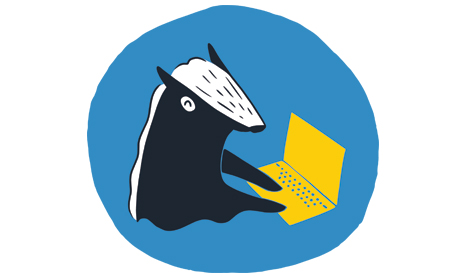If you encounter technical difficulties, please email info@writelikeahoneybadger.com.
AFTER ENROLLING
You’ll receive a receipt and welcome letter within 24 hours. If one doesn’t arrive, please alert info@writelikeahoneybadger.com.
FINE PRINT — REFUNDS
- Before class begins — transfer or full refund
- Initial week of class before the first critique — transfer or a refund minus a $35 administrative fee
- Second week before second critique — transfer or 75% reimbursement
Write Like A Honey Badger can’t accommodate refunds after day 14, but will issue transfer credits for other terms for emergency situations.
AI and PLAGIARISM POLICIES
Write Like a Honey Badger will not critique work that flags as plagiarized or written by generative AI apps like ChatGPT.
If you use artificial intelligence as part of your process, that’s okay. Just make sure you’re creating a unique manuscript that doesn’t read as being written by a bot (check with free tools like www.zerogpt.com and https://copyleaks.com/ai-content-detector).
- We have a zero-tolerance policy on plagiarism. Intellectual property theft is illegal and also harms our colleagues and the industry. Offenders will be removed from class and will not receive any refunds or transfers.
- If a student is caught using AI once, instructors will ask for the project to be revised and resubmitted before critiquing it. At the second instance, the student will be removed from class and will not be refunded or allowed to transfer terms.
PREPARING FOR A WRITE LIKE A HONEY BADGER CLASS ONLINE
Your instructor will reach out a day or two before the workshop launches with log-in details for the online classroom. Until then, here are a few ways to get ready!
Pick an avatar: an image to represent yourself on the site. We encourage faces, as they personalize a web classroom. But should you feel uncomfortable, any image – animal, cartoon, clip art, company logo, etc. – can work well, as long as it “reads” at maximum dimensions of 100 x 150 pixels (think big postage stamp). So crow head or silhouette = good. Flock of crows, harder to understand… Please ensure your photo weighs in under 350kb. Resize and compress bigger files via “Save for Web” options in most photo-editing software or online via http://www.imageoptimizer.net.
Start drafting your bio: As we can’t meet face to face, it would be helpful if you could provide some autobiographical information. Knowing a few details about a writer’s background can help your teacher and fellow students better evaluate story ideas and angles…
Below are some questions — a useful framework — but feel free to improvise as well. Please don’t feel awkward about sharing your age, gender, ethnicity etc.: just omit any info you’d rather keep private.
NAME:
OCCUPATION:
PRONOUNS:
AGE:
ETHNICITY:
LANGUAGES:
HOBBIES:
HOMETOWN:
CURRENT LOCATION:
WRITING EXPERIENCE:
FAVORITE TRAVEL WRITERS:
FAVORITE DESTINATIONS:
DREAM DESTINATION:
GOALS FOR THE COURSE:
WRITING AMBITIONS:
EVEN MORE WAYS TO HIT THE GROUND RUNNING
Consider what expertise or unusual access — in terms of experiences or interviews — you can bring to pitches or pieces: those elements are like catnip for editors.
If you don’t already keep a file or notebook of story ideas, we suggest starting one… then targeting three to five for deeper research dives before class starts. We find it useful to not only read extensively, but to watch relevant movies and connect with locals or experts via forums and social media.
Hoping to break into freelancing or open up new markets? Brainstorm specific, timely angles that employ your expertise. Keep lead-times in mind:
- Breaking news, online or in newspapers — hours to days
- General web/newspaper outlets — several weeks to two months, typically
- Print magazines — anywhere from two months for small stories to two-to-three years out for big features
If you’re excited to dive in, maybe check out some of our favorite books. Write Like a Honey Badger doesn’t require any of these texts, but they’re all excellent volumes to have in your library.
- A Writer’s Coach by Jack Hart
- Writing for Story by Jon Franklin
- Writing Tools by Roy Peter Clark
- Telling True Stories edited by Mark Kramer and Wendy Call

